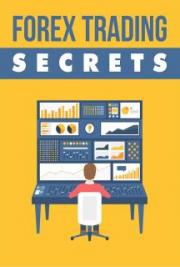http://www.kuro5hin.org/story/2003/7/5/112441/6280.
Cave, D. 2004. Don’t blame KaZaA. Rolling Stone, April 29, p. 17.
Chang, B. 1996. Deconstructing communication: Representation, subject, and economies of exchange. Minneapolis: University of Minnesota Press.
Chattanooga Times. 1996. ASCAP chief says scouts controversy part of
“shameful agenda.” October, p. C3.
Charles, D. 2001. Lords of the harvest: Biotech, big money and the future of food. Cambridge, MA: Perseus Publishing Group.
Chicago Tribune. 1988. Maybe you could get it for a song. October 29, p. C10.
Chmielewski, D. C. 2002. Online film piracy cuts into industry profit. SiliconValley, May 30. http://www.siliconvalley.com/mld/siliconvalley/
3369706.htm.
———. 2004. Music labels use file-sharing data to boost sales. Mercury News, March 31. http://www.mercurynews.com/mld/mercurynews/
business/8318571.htm.
Cho, D. 2003. Fairfax judge orders logs of voting machines inspected.
Washington Post, November 6, p. B1.
McLe_0385513259_7p_all_r1.qxd 12/7/04 11:29 AM Page 353
BIBLIOGRAPHY
353
Claghorn, G. 1996. Women composers and songwriters: A concise biographical dictionary. Lanham, MD: Scarecrow Press.
Cohen, J. 2003. Court backs Beasties in copyright suit appeal. Billboard, November 11. http://www.billboard.com/bb/daily/article_display.jsp
?vnu_content_id =2024875.
———. 2003. Young Bob: John Cohen’s early photographs of Bob Dylan.
New York: powerHouse Books.
Cohen, P. 1999. A liver disorder may have gone unnoticed because of confusion over patents. New Scientist 10 (December 25):10.
Coombe, R. J. 1998. The cultural life of intellectual properties: Authorship, appropriation and the law. Chapel Hill, NC: Duke University Press.
———. (forthcoming). Commodity culture, private censorship, branded environments, and global trade politics: Intellectual property as a topic of law and society research. In Companion guide to law and society. New York: Basil Blackwell.
Cray, E. 2004. Ramblin’ man: The life and times of Woody Guthrie. New York: Norton.
Dannat, A. 1992. The “mine” field. Independent (London), March 23, p. 20.
Dawkins, K. 2003. Gene wars: The politics of biotechnology. 2nd ed. New York: Seven Stories Press.
Dean, K. 2003. Schoolgirl settles with RIAA. Wired News, Sept. 10.
http://www.wired.com/news/print/0,1294,60366,00.html.
———. 2004. New spin on the music business. Wired News, May 15.
http://www.wired.com/news/0,1294,63474,00.html.
Derrida, J. 1981. Dissemination. Trans. B. Johnson. Translator’s introduction. Chicago: University of Chicago Press.
———. 1981. Positions. Trans. A. Bass. Chicago: University of Chicago Press.
———. 1988. Limited, Inc. Evanston, IL: Northwestern University Press.
———. 2002. Acts of religion. New York: Routledge.
Devenish, C. 2004. Downloaders pay back Wilco. Rolling Stone, April 2.
http://www.rollingstone.com/news/newsarticle.asp?nid=19556.
McLe_0385513259_7p_all_r1.qxd 12/7/04 11:29 AM Page 354
354
BIBLIOGRAPHY
Dickie, M. 1988. Superstar: The Karen Carpenter story. Graffiti Magazine, December. http://www.ca.geocities.com/need2bnluv/carpenters/
superstar.htm.
Diehl, M. 2003. The making of Paul’s boutique. Rolling Stone, December 11, p. 138.
Dixon, W., and D. Snowden. 1989. I am the blues: The Willie Dixon story.
New York: Da Capo.
Drahos, P., with J. Braithwaite. 2002. Information feudalism: Who owns the knowledge economy? New York: Free Press.
Drumming, N. 2004. “Kanye, why didn’t Lauryn Hill get down?” Entertainment Weekly, April 16, p. 78.
Duffy, A. 1998. Biodiversity “crackpot” wins Pearson medal. Ottawa Citizen, December 16, p. A10.
Dyas, S. 2003. The Trailer Records saga. Little Village, December, pp. 8–14.
Eisenstein, E. L. 1983. The printing revolution in early modern Europe.
Cambridge: Cambridge University Press.
Ellin, A. 1999. They’re king-size issues, whatever you call him. New York Times, March 21, p. C2.
Endelman, M. 2004. A little pop! Entertainment Weekly, March 5, pp. 11–12.
Ewen, D. 1969. Yanks sing this song most often. Variety, January 8, p. 4.
Fahimian, G. 2004. How the IP guerrillas won: (R)TMark, Adbusters, Negativland, and the “bullying back” of creative freedom and social commentary. Leland Stanford Technology Law Review 1.
Feist Publications, Inc. v. Rural Telephone Service Co., 499 US 340, 349
(1991).
Ferguson, N. 2001. Censorship in action: Why I don’t publish my HDCP
results. macfergus.com, August 15. http://www.macfergus.com/niels/
dmca/cia.html.
Fernando Jr., S. H. 1994. The new beats: Exploring the music, culture, and attitudes of hip-hop. New York: Doubleday.
Finnegan, W. 2003. The economics of empire: Notes on the Washington consensus. Harper’s Magazine, May, pp. 41–54.
McLe_0385513259_7p_all_r1.qxd 12/7/04 11:29 AM Page 355
BIBLIOGRAPHY
355
Fishbein, M., S. Middlestadt, and M. Kapp. 1980. A consumer survey: Home taping. Warner Communications, Inc.
Fisher, W. W. 2004. Promises to keep: Technology, law and the future of entertainment. Palo Alto, CA: Stanford University Press.
Fishman, S. 2000. The public domain: How to find & use copyright-free writings, music, art & more. Berkeley, CA: Nolo.
Frere-Jones, S. 2004. The sound. New York Times, February 8. http://www
.nytimes.com/2004/02/08/magazine/08STYLE.html.
Fricke, J., and C. Ahearn. 2002. Yes yes y’all: The Experience Music Project oral history of hip-hop’s first decade. New York: Da Capo.
Fuld, J. J. 1985. The book of world-famous music. Toronto: General Publishing Company.
Gilbert, A. 2003. iTunes auction treads murky legal ground. CNet News.com, September 3. http://www.news.com.com/2100-1025_3
-5071108.html.
Gillis, J. 1999. Drug companies, gene labs to join forces: Collaboration aims to probe genetic differences—without proprietary interests.
Washington Post, April 15, p. E1.
Gillmor, D. 2002. Entertainment industry’s copyright fight puts consumers in cross hairs. Silicon Valley, February 12. http://www.silicon valley.com/mld/siliconvalley/2658555.htm.
Goldstein, P. 2003. Copyright’s highway: From Gutenberg to the celestial jukebox. Stanford, CA: Stanford University Press.
Goodell, F. 1999. World War MP3: It’s labels vs. artists in the fight for control of the record business. Rolling Stone, July 8–22, p. 43.
Grattan, V. L. 1993. American women songwriters: A biographical dictionary.
Westport, CT: Greenwood Press.
Greenberg, L. A. 1992. The art of appropriation: Puppies, piracy, and postmodernism. Cardozo Arts & Entertainment Law Journal 11.
Greene, T. C. 2003. U.S. senator would destroy MP3 traders’ PCs. The Register, May 18. http://www.theregister.co.uk/content/6/31287.html.
Gross, R. D. 2002. Copyright zealotry in a digital world: Can freedom of speech survive? In Copy fights: The future of intellectual property in the McLe_0385513259_7p_all_r1.qxd 12/7/04 11:29 AM Page 356
356
BIBLIOGRAPHY
information age, eds. A. Thierer and C. W. Crews Jr., p. 189–95. Washington, D.C.: Cato Institute.
Gumbel, A. 2003. All the president’s votes? The Independent (London), October 14, pp. 2–4. Consult Lexis-Nexis.
Guntzel, J. 2004. Talkin’ ’bout a [platform] revolution. Punk Planet, January/February, pp. 64–71.
Guthrie, W. 1990. Pastures of plenty: A self-portrait. Eds. D. Marsh and H.
Leventhal. New York: HarperPerennial.
Hall, R. 2003. Mix tapes rise from street as hip-hop promo, a&r tool. Billboard, April 26, pp. 1, 68.
Hawes, B. L. 1970. The birthday: An American ritual. Unpublished master’s thesis. University of California, Berkeley.
Hays, C. L. 1991. A picture, a sculpture and a lawsuit. New York Times, September 19, p. B2.
Healey, J. and R. Cromelin. 2004. When copyright law meets the “mash-up.” Los Angeles Times, March 21, p. E1.
Hebdidge, D. 1987. Cut ’n’ mix: Culture, identity and Caribbean music.
New York: Routledge.
Hochman, S. 1991. Judge raps practice of “sampling.” Los Angeles Times, December 18, p. F1.
Hoffman, I. 2004. Diebold knew of legal risks. Oakland Tribune, April 20.
http://www.oaklandtribune.com/cda/article/0,1674,82%257E1865%2
57E2095811,00.html.
Howe, J. 2003. BigChampagne is watching you. Wired, October, pp.
138–41.
Isaacson, W. 2003. Benjamin Franklin: An American life. New York: Simon
& Schuster.
Jacobson, M. F., and L. A. Mazur. 1995. Marketing madness: A survival guide for a consumer society. Boulder, CO: Westview Press.
Jensen, J. 2004. Comeback? I never went anywhere! Entertainment Weekly, April 23, pp. 26–32.
Jha, S. 2002. India’s water wars. AlterNet, December 5. http://www.alter net.org/story.html?StoryID=14697.
McLe_0385513259_7p_all_r1.qxd 12/7/04 11:29 AM Page 357
BIBLIOGRAPHY
357
Johannesen, R. L. 1995. The ethics of plagiarism reconsidered: The oratory of Martin Luther King, Jr. Southern Communication Journal 60(3): 185–94.
Johnson, C. 2003. The war business: Squeezing a profit from the wreckage in Iraq. Harper’s, November, pp. 53–58.
Jones, C. 1996. Haven’t I heard that “whoop” (or “hoop”) somewhere before? New York Times, December 22, p. B44.
Jones, S., and A. Lenhart. 2004. Music downloading and listening: Findings from the Pew Internet and American Life Project. Popular Music and Society 27(2): 185–200.
Joyce, E. W. 1998. Cultural critique and abstraction: Marianne Moore and the avant-garde. London: Associated University Presses.
Kelly, R. 2001. Donnie Darko. Director R. Kelly’s DVD commentary. Los Angeles: Twentieth Century Fox.
Klein, J. 1980. Woody Guthrie: A life. New York: Delta Trade Paperbacks.
Klein, N. 1999. No logo: Money, marketing and the growing anti-corporate movement. New York: Picador.
Knopper, S. 2004. Clear Channel limits live CDs. Rolling Stone, May 24.
http://www.rollingstone.com/news/story?id=6066617.
Koestenbaum, W. 1993. The queen’s throat: Opera, homosexuality and the mystery of desire. New York: Vintage.
Kotadia, M. 2004. Microsoft: We took MikeRoweSoft too seriously. CNet News.com,
January 20.
http://www.news.com.com/2102-1014_3
-5143614.html.
Lebrecht, N. 1996. Echoes strike a chord. Daily Telegraph (London), May 11, p. 7.
Lemos, R. 2001. Security workers: Copyright law stifles. CNet News.com, September 6. http://www.news.com.com/2100-1001-272716.html.
Lessig, L. 2001. The future of ideas: The fate of the commons in a connected world. New York: Random House.
———. 2004. Free culture: How big media uses technology and the law to lock down culture and control creativity. New York: Penguin Press.
McLe_0385513259_7p_all_r1.qxd 12/7/04 11:29 AM Page 358
358
BIBLIOGRAPHY
Lew, B. 2000. Metallica, how could you? Salon. http://www.dir.salon.com/
ent/log/2000/05/90/metallica_fan/index.html.
Lewellen-Biddle, M. 2004. Voting machines gone wild! In These Times, January 5, pp. 20–21.
Lindorff, D. 2003. Still watching: Private industry moves in to compile personal data. In These Times, December 8, p. 3.
LiPetri, J. 1999. Owners stretch trademark protection to protect buildings, trees. Micro Publishing News. http://www.micropubnews.com/pages/
issues/1999/899_trademark_mpn.shtml.
Lissauer, R. 1996. Lissauer’s encyclopedia of popular music in America: 1888
to the present. New York: Paragon House.
Litman, J. 2001. Digital copyright. Amherst, NY: Prometheus Books.
Lockwood, L. 2003. Beethoven: The music and life. New York: W. W. Norton
& Co.
MacDonald, M. 2001. Brahms. New York: Oxford University Press.
Madow, M. 1993. Private ownership of public image: Popular culture and publicity rights. California Law Review 81: 125 ff.
Manuel, P. 1993. Cassette culture: Popular music and technology in north India. Chicago: University of Chicago Press.
Marinetti, F. T. 1989. The Futurist cookbook. Trans. S. Brill. San Francisco: Bedford Arts.
Marre, K. 2003. Rage erupts over profiteering clause. The Hill, November 5. http://www.thehill.com/news/110503/profiteering.aspx.
Ma$e. 1999. Stay out of my way. On Double up (CD). New York: Bad Boy Productions.
Maskus, K. E. 2000. Intellectual property rights in the global economy. Washington, D.C.: Institute for International Economics.
McCullagh, D. 2003. SunnComm won’t sue grad student. CNet News.com, October 10. http://www.news.com.com/2102-1027_3-5089448.html.
———. 2004. Congress mulls revisions to DMCA. CNet News.com, May 12. http://www.news.com.com/2102-1025_3-5211674.html.
McGirk, T. 1998. Gene piracy. Time (international edition, Asia), November 9, p. 34.
McLe_0385513259_7p_all_r1.qxd 12/7/04 11:29 AM Page 359
BIBLIOGRAPHY
359
Meikle, G. 2002. Future active: Media activism and the Internet. New York: Routledge.
Menn, J. 2003. All the rave: The rise and fall of Shawn Fanning’s Napster.
New York: Crown Business.
Meredith, P. 2004. Extreme bake sales. Mother Jones, May/June, p. 46.
Meyer, S. 1995. Paradoxes of fame: The Francis Scott Key story. New York: Eastwind Publishing.
Miles, B. 1997. Paul McCartney: Many years from now. New York: Owl Books.
Miller, C. 1997. Dickie Goodman & friends—greatest fables (CD booklet) .
Miami: Hot Productions, Inc.
Miller, K. D. 1993. Redefining plagiarism: Martin Luther King’s use of an oral tradition. Chronicle of Higher Education 39(20), January 20: A60.
———. 1991. Martin Luther King, Jr., and the black folk pulpit. Journal of American History 78(1): 120–23.
Miller, M. W. 1987. Creativity furor: High-tech alteration of sights and sounds divides the art world. Wall Street Journal, September 1, p. 1.
Mojo. 2003. Rhymin’ and stealin’. September, pp. 68–78.
Moore, M. 1969. The art of poetry: Marianne Moore. In Marianne Moore: A collection of critical essays, ed. C. Tomlinson. Englewood Cliffs, NJ: Prentice-Hall.
Morris, G. 1981. When artists use photographs. ARTnews, 80(1), January: 102–6.
Morse, S. 2002. Setting the new market in sampling. Boston Globe, March 3. http://www.boston.com/dailyglobe2/062/living/shtml.
Negativland. 1995. Fair use: The story of the letter u and the numeral 2.
Concord, CA: Seeland.
NOW with Bill Moyers. 2002. Seeds of conflict. October 4. http://www.pbs
.org/now/transcript/transcript_corn.html.
———. 2003. Tollbooths on the digital highway. Produced by Rick Karr.
PBS broadcast, January 17.
O’Harrow Jr., R. 2003. U.S. backs Florida’s new counterterrorism database.
Washington Post, August 6, p. A1.
McLe_0385513259_7p_all_r1.qxd 12/7/04 11:29 AM Page 360
360
BIBLIOGRAPHY
Orlowski, A. 2003. E-voting vendor sued for DMCA takedown. The Register, November 11. http://www.theregister.co.uk/content/6/33750.html.
Oswald, J. 1995. Creatigality. In Sounding off!: Music as subversion/resistance/revolution, eds. R. Sakolsky and F. Wei-Han Ho, pp. 87–90.
Brooklyn: Autonomedia.
Patterson, L. R. 1968. Copyright in historical perspective. Nashville, TN: Vanderbilt University Press.
Peters, J. D. 1999. Speaking into the air: A history of the idea of communication. Chicago: University of Chicago Press.
Plant, S. 1992. The most radical gesture: The Situationist international in a postmodern age. New York: Routledge.
Plato. 1995. Phaedrus. Trans. A. Nehamas and P. Woodruff. Indianapolis: Hackett Publishing Company.
Pope, J. 2003. Microsoft holdout Massachusetts opts for open source.
CRN, September 26. http://www.crn.com/sections/BreakingNews/
dailyarchives.asp?ArticleID=44768.
Pouncey, E. 2002. “Rock concrete: Counterculture plugs into the academy.”
In Undercurrents: The hidden wiring of modern music, ed. R. Young, pp. 153–62. London: Continuum.
Prato, G. 2004. Dickie Goodman. AllMusicGuide.com. http://www.all music.com/cg/amg.dll.
Pringle, P. 2003. Food, Inc.: Mendel to Monsanto—the promises and perils of the biotech harvest. New York: Simon & Schuster.
Quart, A. 2003. Branded: The buying and selling of teenagers. Cambridge, MA: Perseus Publishing.
Rap News Direct. 2003. Ghostface Killah wins copyright infringement case.
http://www.rapnewsdirect.com/Printer/0-205-257646-00.html.
Reagon, B. J. 1991. Nobody knows the trouble I see; or, by and by I’m gonna lay down my heavy load. Journal of American History 78(1): 111–19.
Reichman, J. H., and P. F. Uhlir. 2003. A contractually reconstructed research commons for scientific data in a highly protectionist intellectual property environment. Law and Contemporary Problems 66 (1
and 2): 315–462.
McLe_0385513259_7p_all_r1.qxd 12/7/04 11:29 AM Page 361
BIBLIOGRAPHY
361
Rich, F. 2003. There’s no exit from The Matrix. New York Times, May 25, p. B1.
Richtel, M. 1998. You can’t always judge a domain by its name. New York Times, May 28, p. G6.
Richter, H. 1964. Dada: Art and anti-art. Trans. D. Britt. New York: Thames and Hudson, Inc.
Rigden, P. 1997. Companies covet genes: Ethics and profits compete in the patenting of human genetic materials. Alternatives Journal 3(23): 8.
Roberts, P. 2003. Diebold voting case tests DMCA. PC World, November 4.
http://www.pcworld.com/resource/printable/article/0,aid,113273,00
.asp.
Roht-Arriaza, N. 1997. Of seeds and shamans: The appropriation of the scientific and technical knowledge of indigenous and local communities. In Borrowed power: Essays on cultural appropriation, eds. B. Ziff and P. V. Rao, pp. 255–87. New Brunswick, NJ: Rutgers University Press.
Rojas, P. 2002. Bootleg culture. Salon, August 1. http://www.salon.com/
tech/feature/2002/08/01/bootlegs.html.
Rose, M. 1993. Authors and owners: The invention of copyright. Cambridge, MA: Harvard University Press.
Schlosser, E. 2002. Fast food nation: The dark side of the all-American meal.
New York: Perennial.
Schumacher-Rasmussen, E. 2001. Owners of P-Funk catalog sue over 500 samples. MTV.com. http://www.mtv.com/news/articles/1444406/
20010611/story.jhtml.
Selden Patent. 2002. Weird and wonderful patents. http://www.bpmlegal
.com/wselden.html.
Shanker, T. 2004. G.I.’s in Iraq tote their own pop culture. New York Times, April 13. http://www.nytimes.com/2004/04/13/arts/music/13TROO
.html.
Shiva, V. 1997. Biopiracy: The plunder of nature and knowledge. Boston: South End Press.
McLe_0385513259_7p_all_r1.qxd 12/7/04 11:29 AM Page 362
362
BIBLIOGRAPHY
———. 2001. Protect or plunder? Understanding intellectual property rights. London: Zed Books.
Shreeve, J. 2004. The genome war: How Craig Venter tried to capture the code of life and save the world. New York: Knopf.
Shulman, S. 1999. Owning the future. New York: Houghton Mifflin.
Skinner, L. 2003. Bling! Bling! Ka-ching! Products get play for love and money. Billboard, May 31, pp. 1, 100.
Smith, D. 2003. A portrait of the artist’s troubled daughter. New York Times, November 22. http://www.nytimes.com/2003/11/22/arts/dance/
22JOYC.html.
Smith, E. 2003. Can copyright be saved? New ideas to make intellectual property work in the digital age. Wall Street Journal, October 20.
http://www.online.wjs.com.
Smith, L. 1985. Food servers drafted as birthday warblers. Los Angeles Times, April 5, p. E1.
Sony Corp. of Am. v. Universal City Studios, Inc., 464 U.S. 417, 429, reh’g denied, 465 U.S. 1112 (1984).
Soocher, S. 1998. Blue velvet. Entertainment Law & Finance 14(2): 5.
Sounes, H. 2001. Down the highway: The life of Bob Dylan. New York: Grove Press.
Stamets, R. A. 1994. Ain’t nothin’ like the real thing, baby: The right of publicity and the singing voice. Federal Communications Law Journal 14: 347–73; 349–50.
Stephen, T. 2003. CIOS launches free access to communication journals.
Communication Institute for Online Scholarship. Press release, November 7.
Sterne, J. 2003. The audible past: Cultural origins of sound reproduction.
Durham, NC: Duke University Press.
Stiglitz, J. E. 2003. Globalization and its discontents. New York: W. W. Norton & Company.
Streeter, T. 1996. Selling the air: A critique of the policy of commercial broadcasting in the United States. Chicago: University of Chicago Press.
McLe_0385513259_7p_all_r1.qxd 12/7/04 11:29 AM Page 363
BIBLIOGRAPHY
363
Sulston, J., and G. Ferry. 2002. The common thread: A story of science, politics, ethics, and the human genome. Washington, D.C.: Joseph Henry Press.
Superswell’s Sample Law. Horror stories. http://www.superswell.com/
samplelaw/horror.html.
Toop, D. 1991. Rap attack 2: African hip-hop to global hip-hop. London: Serpent’s Tail.
Tucker, T. 2003. Bolt of fate: Benjamin Franklin and his electric kite hoax.
New York: Public Affairs.
Tzara, T. 1977. Seven Dada manifestos and lampisteries. Trans. B. Wright.
New York: Calder Publications.
Vaidhyanathan, S. 2001. Copyrights and copywrongs: The rise of intellectual property and how it threatens creativity. New York: NYU Press.
———. 2002. Copyright as cudgel. The Chronicle of Higher Education, August 2. http://www.chronicle.com/free/v48/i47/47b00701.htm.
Van, J. 2003. Motorola to unveil 1st Linux cell phone. Chicago Tribune, February 13. http://www.chicagotribune.com/technology/local/profiles/
chi03







